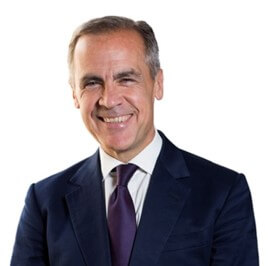“Climate risk may adversely affect the balance sheets of financial institutions and therefore may be relevant for financial stability, in particular if markets are not pricing the related risks correctly.”
So stated the European Central Bank's Financial Stability Review, published on May 29, in a “special feature” on climate change and financial stability. It was not the first, nor will it be the last, such regulatory pronouncement on climate risk, representing an awakening among macroprudential authorities and an intended wake-up call to the financial industry.
A week before the ECB's report, the Bank of England published A Framework for Assessing Financial Impacts of Physical Climate Change, described as “a practitioner's aid for the general insurance sector.”
Also in May, the European Securities and Markets Authority established a Coordination Network on Sustainability to focus on policies “related to integrating sustainability considerations into financial regulation.” And the U.S. Commodity Futures Trading Commission announced that climate-related risk would be the subject of a June 12 meeting of its Market Risk Advisory Committee. “It's time for the United States to take a more active leadership role and join our international counterparts in addressing this issue,” CFTC commissioner Rostin Behnam said.
It's hard to pinpoint exactly what triggered this heightened sensitivity to climate change risk and its potential for disruption to the financial sector.
Some point to a 2015 speech by Mark Carney, governor of the Bank of England and then chairman of the Financial Stability Board, mentioning “profound implications” for financial stability and the economy and scientific indications that “climate change will threaten financial resilience and longer-term prosperity.”
Catastrophes and Their Costs
Another factor may have been Super Storm Sandy's direct hit on the New York financial center in 2012; it caused $64 billion in damage, flooding of infrastructure and a shutdown of the New York Stock Exchange. Fast forward to 2019, and the bankruptcy filing of Pacific Gas & Electric Co. - which faced an estimated $30 billion liability stemming from California wildfires - was dubbed by the Wall Street Journal “the first climate change bankruptcy.”

Natural catastrophes resulted in $160 billion in losses last year, according to Munich Re, with such climate-related events as wildfires, extreme storms, drought and heat waves capturing the attention of the financial sector and its risk managers.
Whatever the impetus, awareness of climate change and its risks - the challenges and opportunities for financial firms, their customers and the investment portfolios managed on their behalf - is on the rise.
“The topic is definitely on the table for financial firms, at the same time that the issue is coming to the fore in civil society and to the attention of regulators,” says Emanuele Campiglio, assistant professor at the Vienna University of Economics and Business and co-author of several papers on the topic including Climate Change Challenges for Central Banks and Financial Regulators.
A big question for Campiglio and other observers is whether the upsurge of interest and activity will sufficiently and successfully stem the environmental impact. According to the United Nations Intergovernmental Panel on Climate Change (IPCC), we have only 11 years to ensure that a rise in global temperature is kept to a maximum of 1.5 degrees Celsius, beyond which even a half degree increase will significantly worsen the risks of drought, flood, heat and poverty for millions.
The TCFD Initiative
Global coalitions such as the Task Force on Climate-Related Financial Disclosures (TCFD), which was founded in 2015 by the Financial Stability Board and is chaired by Michael Bloomberg, have acted to push the agenda.
At the start, the task force called for entities in all sectors to be transparent by adopting a standardized approach to monitor and categorize climate change risk using scenarios and other tools. In 2017, it asked member companies - including financial institutions - to organize climate-risk disclosures around governance, strategy, risk management and targets. Participants are to explain how their programs for identifying and managing climate-related risks are integrated into their overall risk management frameworks, as well as set climate risk reduction targets in view of the 1.5-degree scenario.
The TCFD has grown to more than 500 supporters, including more than 280 financial firms such as Barclays, BlackRock, BNP Paribas Asset Management, HSBC, JPMorgan Chase & Co., Industrial and Commercial Bank of China, and Swiss Re.
In a September 2018 status report, TCFD said that a minority of companies disclose forward-looking climate targets or address the resilience of their strategies under different climate-related scenarios, a key goal. Financial companies, facing regulatory and shareholder pressures, are more likely than others to disclose how they have embedded climate risk into their overall risk management.
CDP, formerly the Carbon Disclosure Project, has aligned its information-gathering with the TCFD framework. CDP said that out of more than 6,000 companies reporting for its 2018 Global Climate Change Analysis: 73% have board-level oversight of climate-related risks; 72% integrate climate risk into their business strategy; and 55% integrate processes for identifying, assessing, and managing climate-related issues into multi-disciplinary risk management. “This is an important step in escalating climate-related issues from a siloed or isolated CSR/ESG department issue to a company-wide issue,” CDP said.
Central Banks and Supervisors
A more recent call to action came from the Network for Greening the Financial System (NGFS), a group of three dozen central banks and supervisors from around the world - including the Bank of England, Bank of France, and People's Bank of China (but none from the U.S.). The network said in an April report that climate-related risks must be viewed as a form of financial - not merely a reputational - risk, and thus they fall squarely within the mandates of central banks.
“The financial risks we face through climate change are analytically difficult, unprecedented and yet very urgent,” said Frank Elderson, executive director of the Dutch Central Bank and chairman of the NGFS.
The NGFS report says that a transition to a green and low-carbon economy “is crucial for our own survival,” and failure could result in increasingly severe and frequent heat waves, landslides, floods, wildfires and storms, all affecting such financial variables and stability factors as economic growth, productivity, food and energy prices, inflation expectations, and insurance costs.
The key risk, the NGFS notes, is that global warming is irreversible, and there is no mature technology to ensure that climate-induced problems will go away.
Investor Actions
In May, 20 institutional investors from 11 countries - including Rockefeller Investment Management and Manulife Asset Management - were convened by the UN Environment Finance Initiative (UNEP FI) and announced guidelines, in line with TCFD principles, to help investors assess climate change risk and opportunities. Other investor groups calling for financial sector participation in the reduction of climate change ills include Climate Action 100+ and the Institutional Investors Group on Climate Change.

A few months earlier, former Federal Reserve chair Janet Yellen spoke in support of a carbon tax. It is an initiative of the Climate Leadership Council, a bipartisan group that includes other former government officials and Nobel laureates and has corporate supporters including Allianz, MetLife and Santander Group.
Money is flowing into environmental, social and governance (ESG) funds. At the start of 2018, $11.6 trillion in assets were overseen by U.S. money managers who consider ESG criteria as an investment factor. That increased from $8.1 trillion in 2016, according to the Forum for Sustainable and Responsible Investment.
Research firm Aite Group said in an April report that spending on ESG-related services by asset owners and managers is expected to grow from $111 million in 2015 to $322 million in 2021.
“Institutional asset owners, particularly in Europe, are leading the way in terms interest and use of ESG ratings and analytics,” says Aite analyst and report author Paul Sinthunont. He notes there are at least 20 ESG rating and analysis systems, with ISS, MSCI, Refinitiv, Sustainalytics, and Video Eiris as the most prominent, alongside Bloomberg as a leading data provider.
In April, S&P Global introduced an ESG evaluation service through its Trucost subsidiary. The company describes it as separate from credit ratings and “a new benchmark that provides a cross-sector, relative analysis of an entity's capacity to operate successfully in the future,” that “is grounded in how [ESG] factors could affect its stakeholders and potentially lead to a material financial impact.”
Exchange Operators
Exchange companies are also bolstering their ESG positioning. The Eurex exchange, for example, introduced ESG index futures early this year; they recently launched in the U.S. with CFTC approval.
In May, Hong Kong Exchanges and Clearing opened a two-month comment period for an update to its stock market's ESG reporting guide and listing rules, saying, “Investors are increasingly willing to allocate capital in sustainable investments which take into account climate change concerns and ESG reporting of issuers, and are thus demanding more information on how issuers manage their ESG risks.”
On June 3, London Stock Exchange Group announced its acquisition of Beyond Ratings, a provider of ESG data for fixed-income investors.
Spotlight on BNP
How are financial institutions actually performing?
ShareAction, a U.K. nonprofit advocating socially responsible investing, says BNP Paribas is one that gets high marks. The Paris-based bank is on pace with targets set by the Paris Climate Agreement to limit global warming. It has committed to raise its total financing of renewable energies to €15 billion by 2020 and to invest €100 million in start-ups working to promote the energy transition.
BNP Paribas has conversely stopped financing or investing in coal extraction projects, coal-fired electric power plants, coal mining pure plays and coal power companies that have not developed a diversification strategy. In addition, the bank decided in late 2017 to cease all relations with firms whose primary activity is exploration, production, distribution, marketing or trading of shale oil, or gas and oil produced from oil sands.
“For us, awareness of climate change risk is front and center,” says Adam Kanzer, head of stewardship, Americas at BNP Paribas Asset Management. He views the TCFD format as “a good place to start,” as it provides a helpful framework for dealing with the range of climate risks and “sets the bar” for comparable reporting across industries and sectors. That is something the financial sector needs more of, Kanzer says.
Banking on a Low Carbon Future, a 2018 Boston Common Asset Management report that had input from ShareAction and other regional partners, said that 95% of 59 surveyed banks had some form of climate governance and oversight in place. However, fewer than half had implemented a 2-degree Celsius or lower scenario analysis or other risk assessments, while 46% had explicit objectives and targets for low carbon products and services.
Physical and Transition Risks
Climate Change: Managing a New Financial Risk, a February report and survey by consulting firm Oliver Wyman with the International Association of Credit Portfolio Managers, advised that to prepare for the changing climate landscape, banks and other financial firms need to be in line with TCFD recommendations and treat climate risk as a financial risk. They should also integrate climate considerations into financial risk management programs.
“It is the risk team at financial firms - not the corporate social responsibility team - who need to be the owners of the climate risk assessment exercise,” says Oliver
Wyman partner and report co-author Ilya Khakin.
The firm recommends adopting the TCFD methodology to assess not just physical risks that may result from climate change, but also transition risks - those associated with the transition to a low-carbon economy, resulting in “stranded assets” and the loss of value in carbon-intensive assets such as reserves of oil, gas and coal.
“Climate risk is a new type of risk that firms are grappling with,” Khakin says. “It is still too early to make precise measurements, but applying some measurement such as the TCFD guidance and climate scenario analysis is important, and so, we work with clients to help them integrate this data and analysis into their risk management organization.”
Data and Talent Gaps
Climate scenario modeling will be a challenge, says Satyajit Bose, a lecturer in sustainable investing at Columbia University, as “a lot of the data out there is prepared by government agencies and universities but is not necessarily meant for use by portfolio managers.”

Bose sees a shortage of people who speak both the language of finance and the language of climate scenario modeling. “This is probably why our training programs in sustainability management have become more popular among financial executives in the last three years,” he says.
The good news is that there is impetus for financial firms to change. Oliver Wyman's report projects that climate change will lead to increased credit risks for banks, as demonstrated by the recent PG&E bankruptcy, while mortgage portfolios can be impacted by climate-linked physical risks such as extreme storms and flooding. And any introduction of a carbon tax could impact the profitability of many investments and portfolios.
The report also says climate change will prompt substantial structural adjustments to the global economy, with sectors such as coal and steel expected to experience significant disruption. Others such as renewables, carbon capture and adaptation technology are likely to benefit.
On the upside for banks: “Massive amounts of capital and new financial products will be required to fund the transition and finance climate resilience, creating demand for bank services.”
Take a Holistic Perspective
Oliver Wyman says that a TCFD compliance effort is not as taxing as regulatory stress testing, but does require commitment and resources.
To begin with, “Institutions should avoid working on TCFD and climate scenario planning in a siloed fashion,” says Alban Pyanet, principal and co-author of the Oliver Wyman report. “Climate change risk is a topic that cuts across departments and must have cross-department collaboration in order to be successful.”
Says Khakin, “The TCFD adoption is more of a five-year timeline,” and ideally entails the setting of climate management goals on the part of boards and senior management; requires a process of risk-based prioritization, which means that resources to develop climate risk capabilities are allocated to areas with the highest potential impacts; and the creation of customized climate change scenarios that help to understand various “what ifs,” the specific vulnerabilities of a given business, and often involving of cross-functional expertise across the institution.
Three Categories of Risk
Ian Stewart, partner and chief economist of Deloitte UK, has blogged about guidance from the Bank of England on three ways in which climate change threatens financial stability:
- Through damage to property, trade and infrastructure from more frequent severe weather.
- Transition risk, resulting from an abrupt and economically disruptive shift to a low carbon economy. Stewart writes that “energy costs would soar, swaths of the capital stock would be rendered obsolete, and the market value of carbon-intensive industries such as oil, autos and transport would drop.”
- Demands for compensation from businesses by individuals or groups who suffer as a result of climate-related events.
There remains a big question about the speed at which the financial sector and other groups - government, businesses of all types and individuals - respond to climate change, and “whether a gradual adjustment, one that avoids major economic disruption, will prove enough.”
Stewart refers to fossil fuels as “the ubiquitous, general purpose technology of the modern economy. Weaning the world off them is an epic task. Mark Carney has warned of what he calls the 'tragedy of the horizon' - the risk that, by the time there is a consensus for arresting climate change, it may be too late.”
Katherine Heires is a freelance business journalist and founder of MediaKat llc.